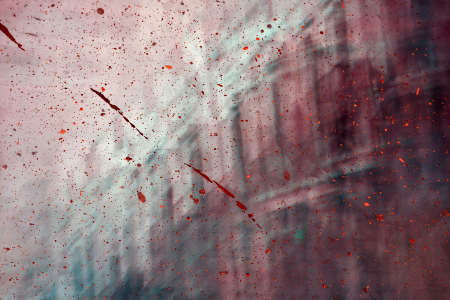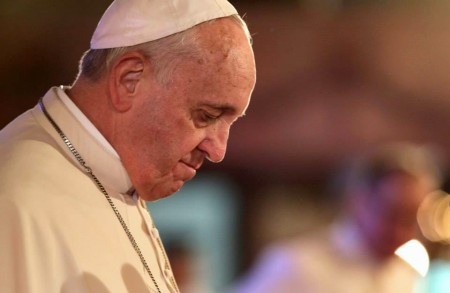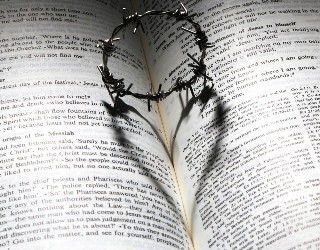Innocenzo di Pietro Francucci da Imola
FREE Catholic Classes
Italian painter ; b. at Imola, c. 1494; d. at Bologna, c. 1550. When but twelve years of age he arrived at the latter city to study painting as a bursar of his native town, which, by an ordinance dated 17 March, 1506, had voted him an annual subsidy of ten baskets of grain. He entered Francia's atelier, as is proved by this extract from the master's register, given by Malvasia: "1508. On the 7 May I took into my school Nocentio Francuccio of Imola, on the recommendation of Felesini and Gombruti." It is probable that Innocenzo went to Florence and that he studied for some time under the direction of Mariotto Albertinelli. Soon he was invited by Count Giovanni Battista Bentivoglio to take up his residence at Bologna. Here Innocenzo passed the remainder of his life, and here are still to be found the greater number of his works.
But a sovereign influence, that of Raphael, had already taken possession of the artist and effaced in him all the influences which had preceded it; or rather, he found in the work of Raphael the finished expression of that quality which had charmed him in Francia and Mariotto, as in Andrea del Sarto and Fra Bartolommeo. It is doubtful, however, whether he ever knew Raphael, who had left Florence in 1508 and returned only for a few months in 1517, when Innocenzo was busy at Bologna in the famous convent of S. Michele in Bosco. It is almost certain that he never was at Rome, and, consequently that he was not acquainted — unless by engraving — with the great decorations of the Stanze and the Farnesina; for him Raphael is still the painter of the Madonnas. On the other hand, we know that Francia had friendly relations with the Urbinese master. We know, too, that one of the first pieces of work executed by Innocenzo for Bentivoglio "was a copy of the "Virgin with the Fish," now at Madrid, a picture then already famous and in the possession of a nobleman. Such copies, no doubt, were scattered throughout Italy, popularizing the genius of Rafael. Thus did the master's influence radiate quite beyond the limits of his school, and artists like Garofalo and Bagnacavallo were to be seen establishing at a distance from that school — at Ferrara and at Bologna — veritable foci of Raphaelesque imitation.
Innocenzo is one of the striking examples of this influence. With him it was not, as it was with Bagnacavallo, a form of servility impelling him to travesty now the "Transfiguration," now the "Healing of the Paralytic"; but through a kind of natural sympathy the ideas of the master were caught up and re-echoed in the kindred soul of the disciple. The force of Innocenzo's love was such as to give those ideas a new life in himself. His art is only a reflected art, and yet it keeps a certain spontaneity. With forms which are nearly all borrowed, the feeling remains ingenuous and at times charming. For the most part, however, Innocenzo's works are only anthologies of Rafael, like the "Holy Family with his patrons" or the "St. Michael with the saints " in the Bologna museum, formed by the fusion of the "Virgin of Foligno " with the "St. Michael" of the Louvre. Other works, on the other hand, are freely created in the spirit of Raphael, such as the "Marriage of St. Catherine" in S. Giacomo Maggiore, one of this master's largest pictures, and perhaps his best, with a solidity of execution very remarkable in a work of that date (1536). The predellas with which he loved to embellish his work are almost invariably charming works in themselves, the predella often better than the picture. In general, Innocenzo painted little besides altar pieces. Still, he did his part in the decoration of the Palazzino della Viola, where Cardinal d'Ivrea entrusted him with the painting of a loggia. Lastly, his frescoes in S. Michele in Bosco are not to be despised, demonstrating his love of large and simple subjects.
His work is interesting precisely because it maintained in some measure the suavity of the old religious art, avoiding the pompous and violent subjects which were beginning to seduce the minds of his contemporaries. His was a delicate poetic talent, with little originality, and the old themes offered it sufficient scope, and, in an age that was already abandoning those themes, this very spirit of tradition constituted a sort of originality. His life was that of a simple hard-working artist, wholly given to the art which he respected and for which he won respect. Affable and modest, shunning the licentious society of his fellow artists, he possessed the charm of a gentle and kindly disposition. Carried off, at the age of fifty-six, by a malignant fever, he left at Bologna the memory of an upright artist and an exemplary man.
We ask you, humbly: don't scroll away.
Hi readers, it seems you use Catholic Online a lot; that's great! It's a little awkward to ask, but we need your help. If you have already donated, we sincerely thank you. We're not salespeople, but we depend on donations averaging $14.76 and fewer than 1% of readers give. If you donate just $5.00, the price of your coffee, Catholic Online School could keep thriving. Thank you.Help Now >
We ask you, humbly: don't scroll away.
Hi readers, it seems you use Catholic Online a lot; that's great! It's a little awkward to ask, but we need your help. If you have already donated, we sincerely thank you. We're not salespeople, but we depend on donations averaging $14.76 and fewer than 1% of readers give. If you donate just $5.00, the price of your coffee, Catholic Online School could keep thriving. Thank you.Help Now >








 Daily Readings for Friday, April 19, 2024
Daily Readings for Friday, April 19, 2024 St. Alphege: Saint of the Day for Friday, April 19, 2024
St. Alphege: Saint of the Day for Friday, April 19, 2024 Stewardship Prayer: Prayer of the Day for Friday, April 19, 2024
Stewardship Prayer: Prayer of the Day for Friday, April 19, 2024

